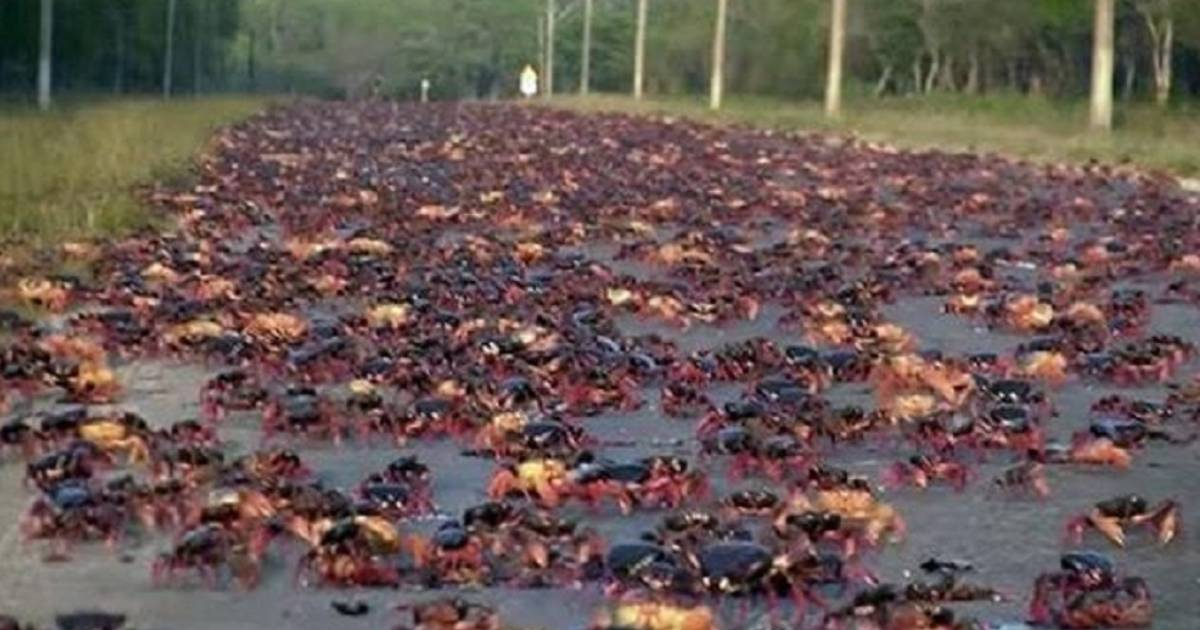The recent rains in Cuba have triggered a massive migration of **red crabs** along the highway connecting the city of **Trinidad** with the province of **Cienfuegos**. Authorities have warned the public that these crustaceans "cannot be eaten."
This event is not uncommon in this region of the country, where thousands of crabs have been crossing the road in recent days, according to the local newspaper Escambray. Experts state that unlike the **Moro crab**, the **red crab** or **zombie crab** is not edible, as consuming it could have adverse effects on humans. The shell of this species contains tungsten, a heavy metal that could accumulate in the body and cause serious health issues.
While the migration of red crabs is fascinating for specialists and local residents, it also raises concerns about the need to preserve the lives of these animals and avoid disruptions for drivers. Many crabs may be crushed by cars, but their claws can also puncture tires. Therefore, authorities have recommended avoiding this highway during the morning or evening and driving at low speeds when travel is unavoidable.
Regular drivers on this route suggest driving gently, as the crabs, sensing the approach of vehicles, try to move away, although their claws can still damage tires. This crustacean, known as the **land crab** or **zombie crab**, is not exclusive to Cuba but is an essential part of the island's landscape, particularly in the **Zapata Swamp**.
Although they are not consumed, environmental experts advocate for their conservation, as they serve as a food source for other terrestrial and marine species.
Important Information About Red Crab Migration in Cuba
Here are some frequently asked questions and answers regarding the red crab migration along the highway between Cienfuegos and Trinidad, and the associated warnings from authorities.
Why can't the red crabs be eaten?
The red crabs contain tungsten in their shells, a heavy metal that could accumulate in the human body and cause serious health issues.
What precautions should drivers take on the highway during crab migration?
Authorities recommend avoiding the highway during the morning or evening and driving at low speeds when travel is unavoidable to prevent accidents and tire damage.
Why is it important to conserve the red crabs?
Environmental experts advocate for their conservation because red crabs serve as a food source for other terrestrial and marine species.
